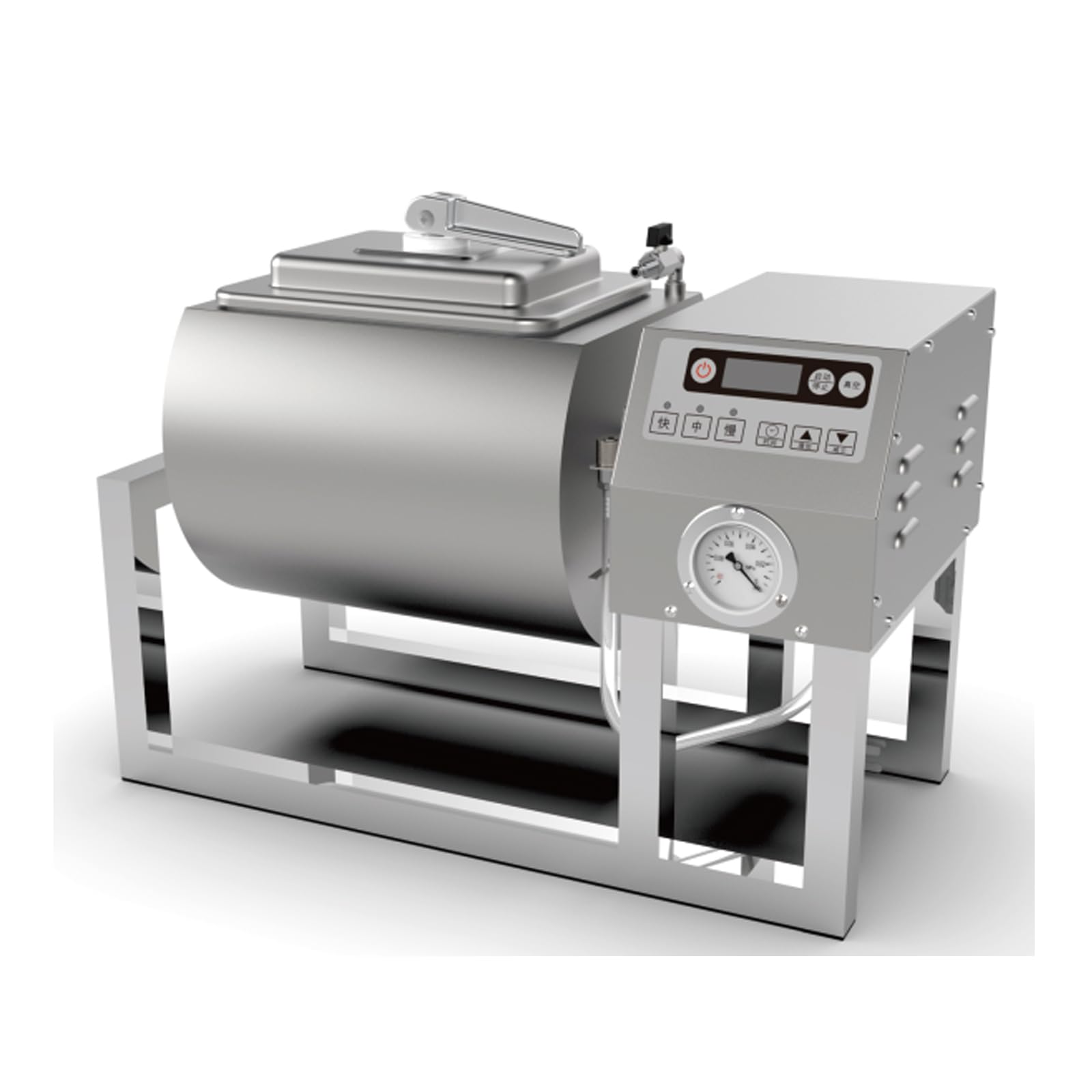10 years of experience as a food machinery equipment manufacturer
10 years of experience as a food machinery equipment manufacturer
The landscape of food processing, particularly meat preparation, has been significantly transformed by technological advancements. Among these, the meat vacuum tumbler marinator stands out as a pivotal piece of equipment for businesses ranging from small butcheries to large-scale industrial operations. This technology addresses the dual challenges of efficient marination and product quality enhancement, offering a sophisticated solution to traditional methods.

A meat vacuum tumbler marinator is a specialized machine designed to infuse meat products with marinades, spices, and other flavorings more effectively and rapidly than conventional soaking or injection techniques. The core components typically include a rotating drum, a vacuum system, and a control panel. Meat, along with the desired marinade, is placed inside the drum. The vacuum system then evacuates air from the drum, creating a low-pressure environment. The drum then rotates, gently tumbling the meat.
This combination of vacuum and mechanical action is crucial. The vacuum expands the muscle fibers of the meat, opening up pores and creating more surface area for the marinade to penetrate. The tumbling motion ensures that all pieces of meat are consistently exposed to the marinade and also provides a massaging effect, which can help to tenderize the product by breaking down tough muscle tissues.
The efficacy of a meat vacuum tumbler marinator lies in the scientific principles it employs. Traditional marination relies on diffusion, a relatively slow process where marinade gradually seeps into the meat. Vacuum tumbling accelerates this process considerably.
Vacuum Application: When a vacuum is applied, the air within the meat’s intercellular spaces and on its surface is removed. This pressure differential facilitates the rapid absorption of the marinade into the meat once the vacuum is released or during the tumbling process under vacuum. The removal of air also reduces oxidation, which can help preserve the color and quality of the meat.
Mechanical Tumbling: The gentle, yet persistent, tumbling action serves multiple purposes. It ensures even distribution of the marinade, preventing some pieces from being over-marinated while others remain under-marinated. The physical impact of the meat pieces falling against each other and the drum walls contributes to mechanical tenderization. This action can break down collagen and muscle fibers, resulting in a more tender final product. Furthermore, the tumbling helps to extract salt-soluble proteins to the surface of the meat, which can improve binding and moisture retention, especially in processed meat products.
The adoption of meat vacuum tumbler marinators offers a range of benefits that contribute to improved product quality, operational efficiency, and profitability.
Meat vacuum tumbler marinators are versatile and find applications across various sectors of the food industry and for different types of meat. They are commonly used for:
Establishments from gourmet restaurants and specialty butcher shops seeking to elevate their product offerings, to medium and large-scale food processing plants aiming for efficiency and consistency, can leverage this technology.
When considering the acquisition of a meat vacuum tumbler marinator, several factors should be evaluated:
The meat vacuum tumbler marinator is more than just a machine; it represents a significant step forward in food processing technology. It allows for greater control over product characteristics, enabling businesses to meet consumer demands for high-quality, flavorful, and tender meat products. By optimizing the marination process, these machines contribute to reducing food waste (through better yield and shelf-life of marinated raw products) and improving the overall efficiency of the meat supply chain.

In conclusion, the meat vacuum tumbler marinator has established itself as an indispensable tool in modern meat processing. Its ability to enhance flavor, improve texture, increase yield, and shorten processing times offers compelling advantages, making it a valuable asset for any operation looking to optimize its marination processes and deliver superior meat products to the market.
